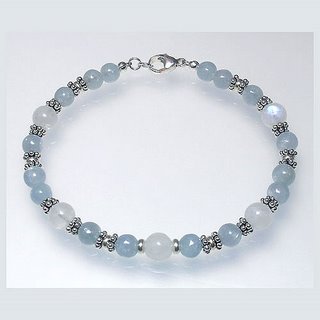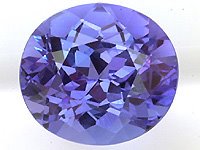I've moved!
Here's the new url: www.crystal-inspirations.com/blog
Now to find out if there is a way to just forward traffic from this address to the new one...
relections, ramblings & ruminations of your friendly neighborhood jewelry artist
 One can easily lose themselves while gazing into this beautiful gemstone. The most valuable member of the feldspar mineral family, Moonstone has a distinctive metallic blue shimmer, known as adularescence, that reflects across the surface when the stone is moved.
One can easily lose themselves while gazing into this beautiful gemstone. The most valuable member of the feldspar mineral family, Moonstone has a distinctive metallic blue shimmer, known as adularescence, that reflects across the surface when the stone is moved. Not surprising, this mysterious gem is surrounded by folklore dating back to ancient times. Moonstone was popular with the ancient Romans who believed, due to its resemblance to the Moon, that it was actually solidified moonlight.
In India, where it is still considered a sacred stone, Moonstone is believed to possess the ability to control temperament and erratic behavior as well as cure insomnia.
In some early cultures it was believed that one could predict the future by holding Moonstone in your mouth during a full moon. It was also thought to balance the yin and yang and to protect against epilepsy, insanity and sunstroke as well as cure headaches and nosebleeds and ensure abundant crops.
Healing Properties: Moonstone is believed to bring good fortune, enhance passion and intuition and to protect women (especially during pregnancy and childbirth), children, and traveler's (especially travel at sea).
Often called the "Visionary's Stone", Moonstone is thought to help the wearer see things more clearly and attribute to life-changing inspirations.
Physically, Moonstone is thought to aid in the treatment of female related health issues including menstrual problems and hormonal imbalances as well as increase fertility. Moonstone's more general healing associations are with the digestive and circulatory systems, the alleviation of swelling and water retention, and the relief of emotional distress, anxiety and stress.
Color: The most common, and well known, Moonstone color is a translucent, milky white with a touch of blue, but it can also be found in peach, green, pink, yellow, brown or grey. Polished Moonstones also commonly exhibit chatoyancy (the "cat's eye" effect).
Care: Moonstone is a fairly soft stone and can be easily scratched, so it should be wrapped in a soft cloth and stored separately from your other jewelry pieces. Do not use ultrasonic cleaners to clean Moonstone jewelry. You should also avoid sudden temperature changes and contact with cosmetics, hair spray, perfume, and household chemicals.
Interesting Facts:
 I only just recently discovered celestite (also known as celestine) and it is quickly becoming one of my favorites.
I only just recently discovered celestite (also known as celestine) and it is quickly becoming one of my favorites.